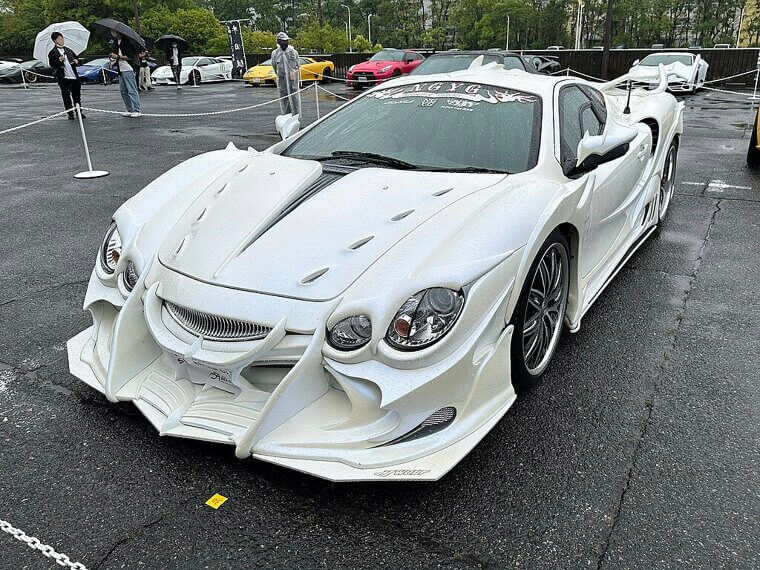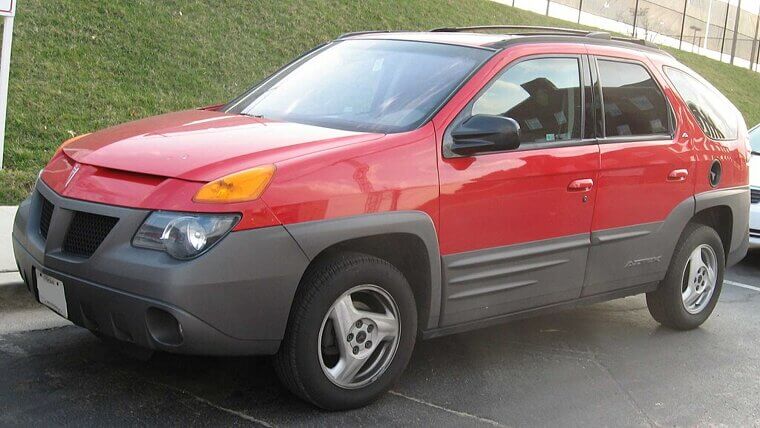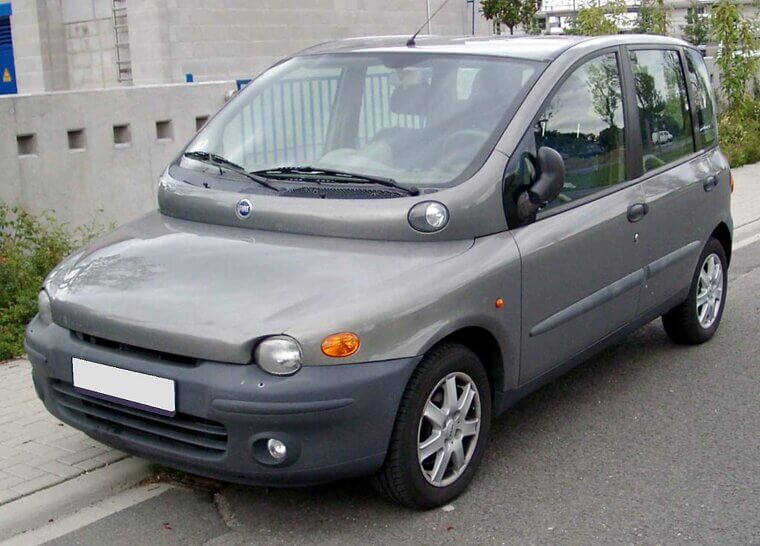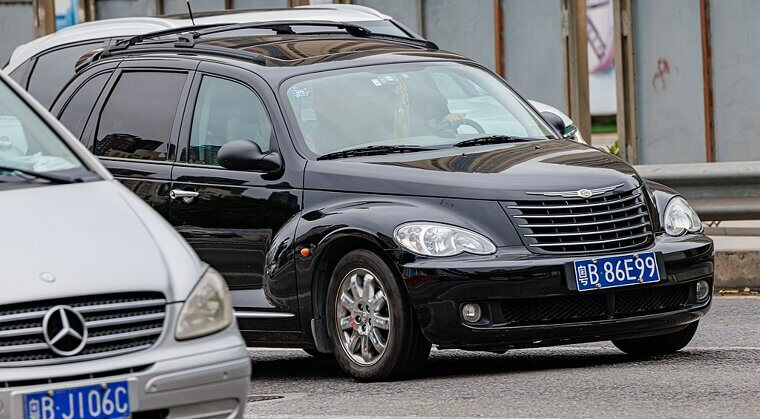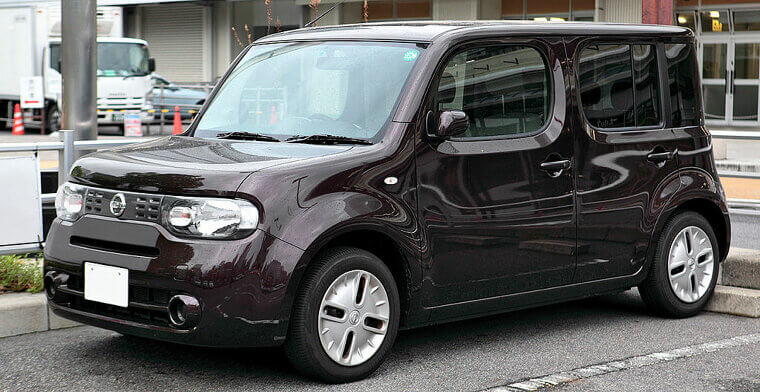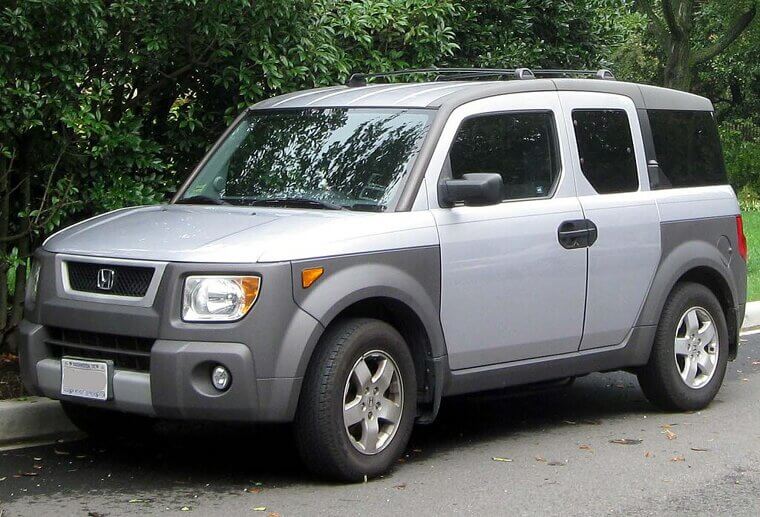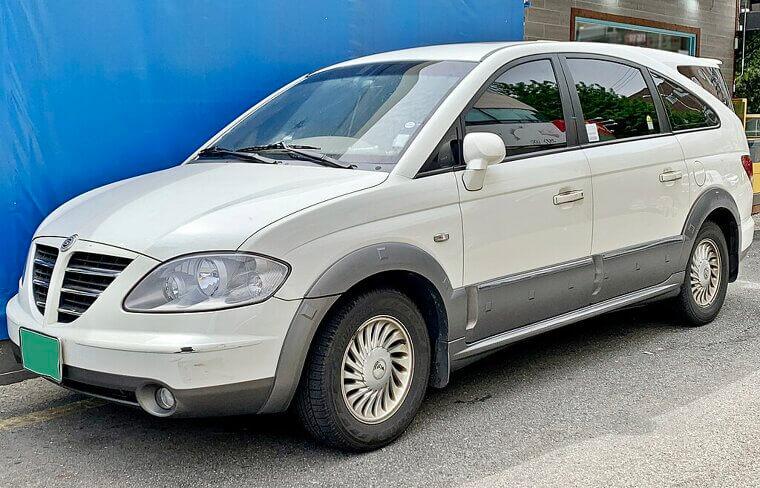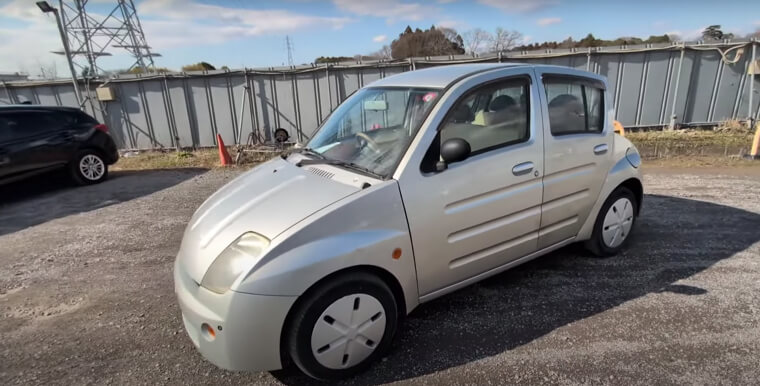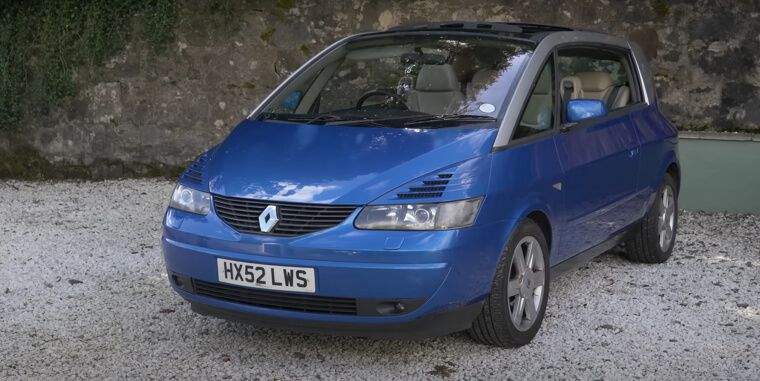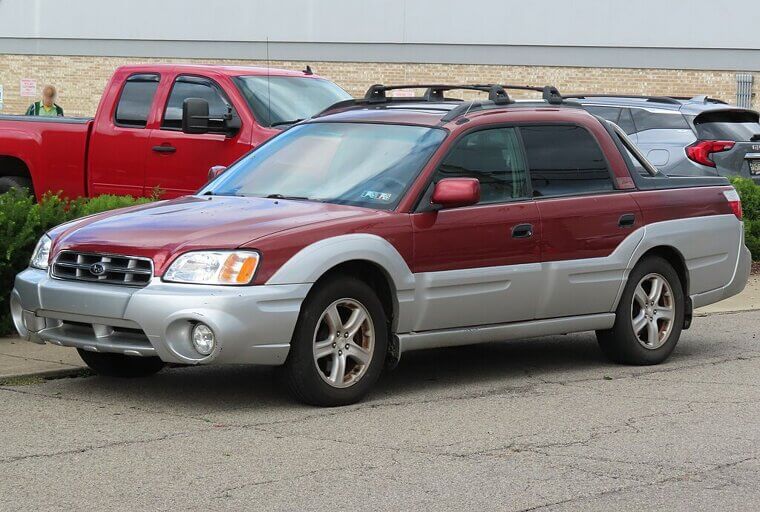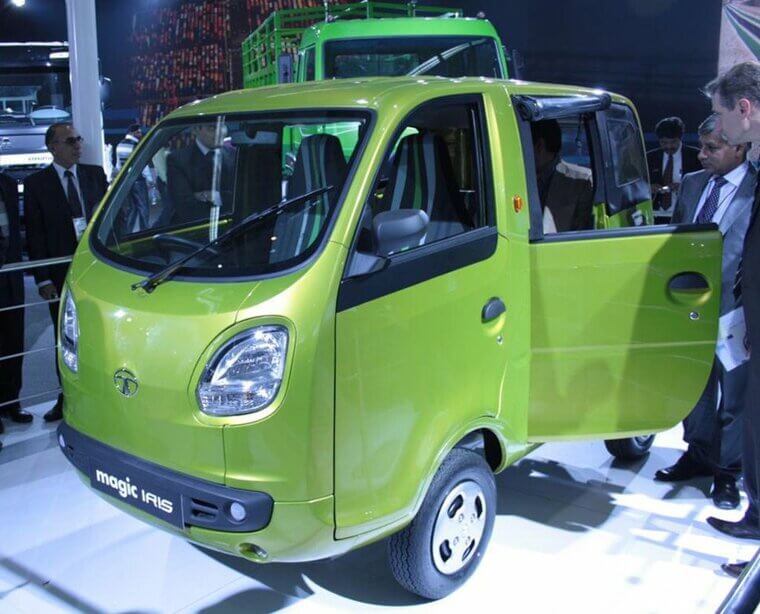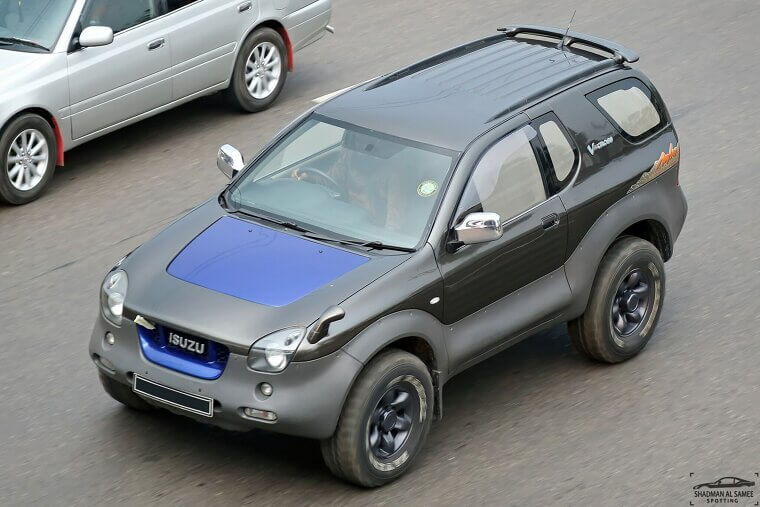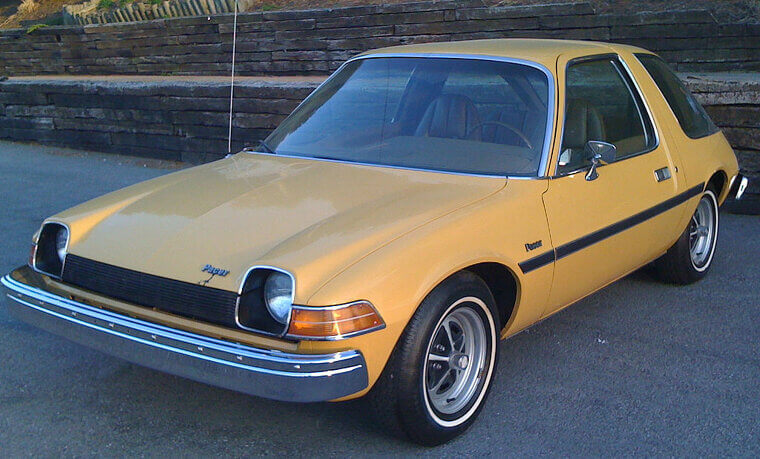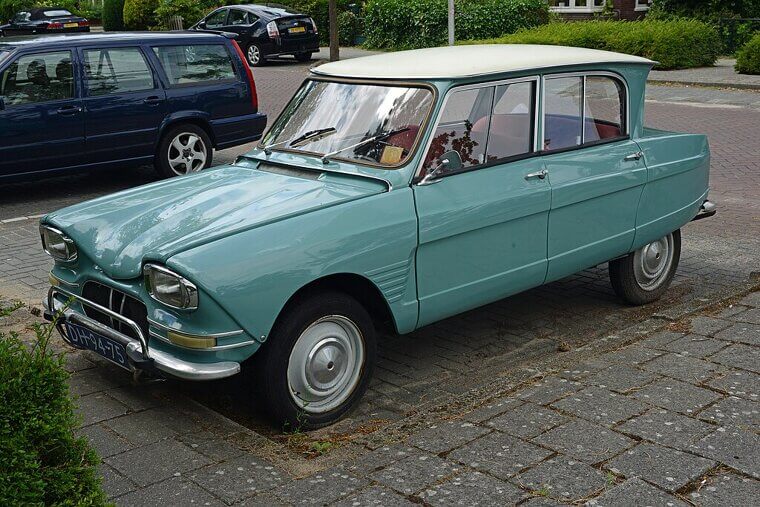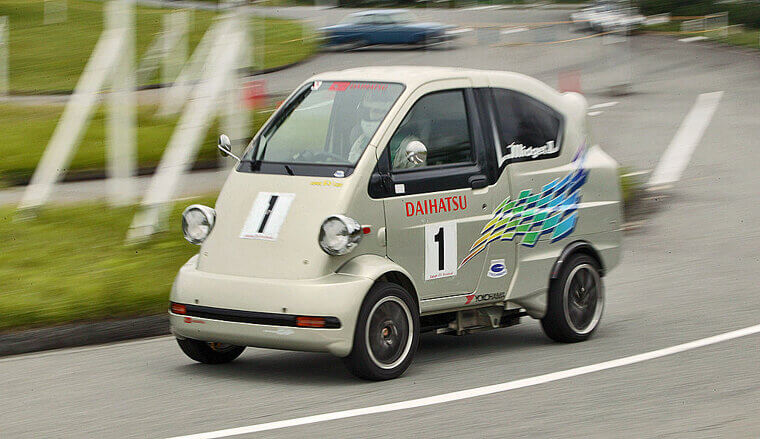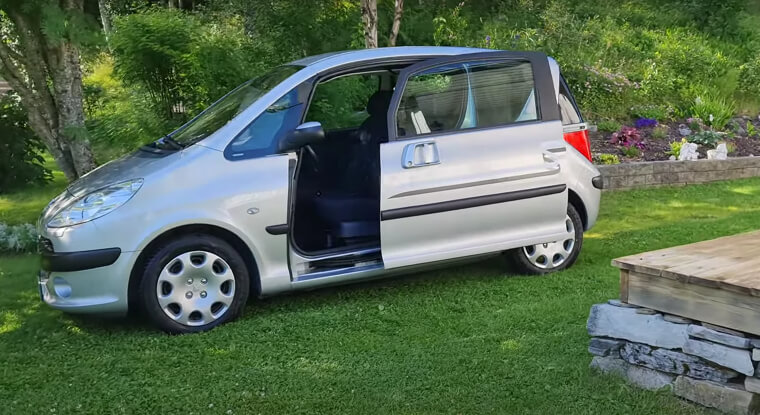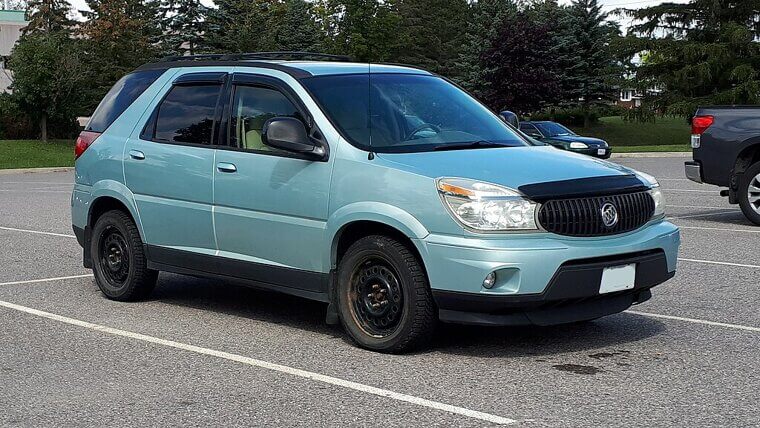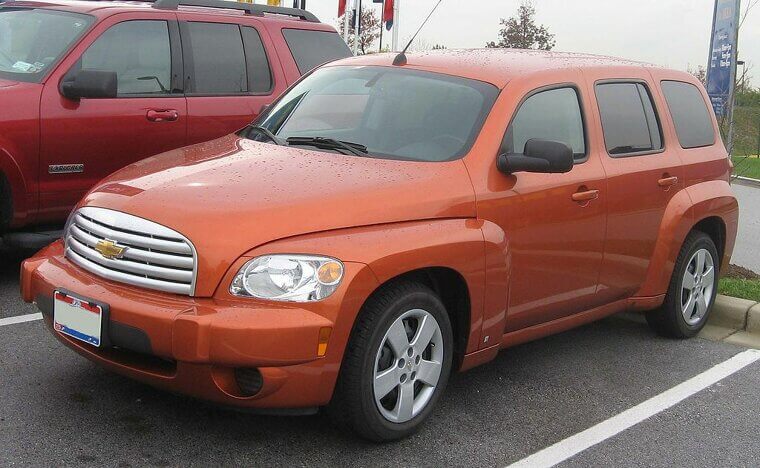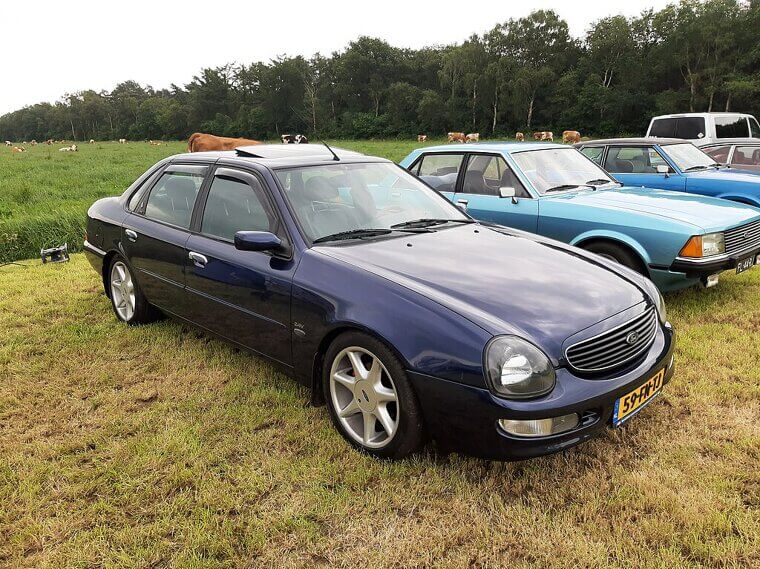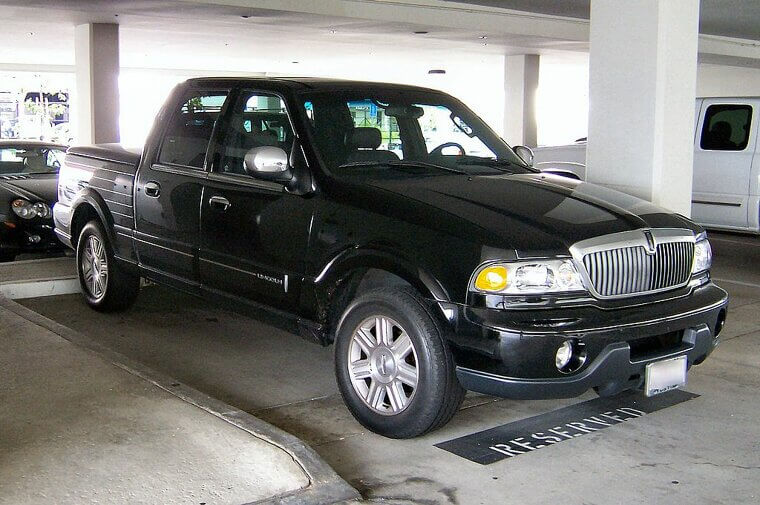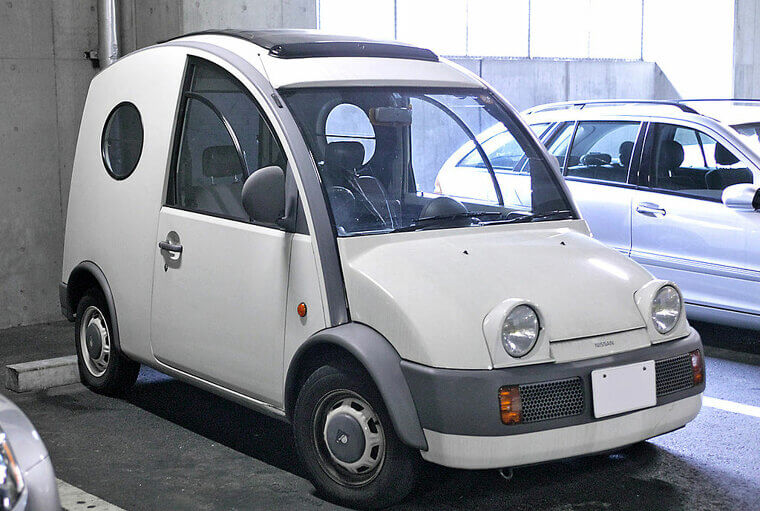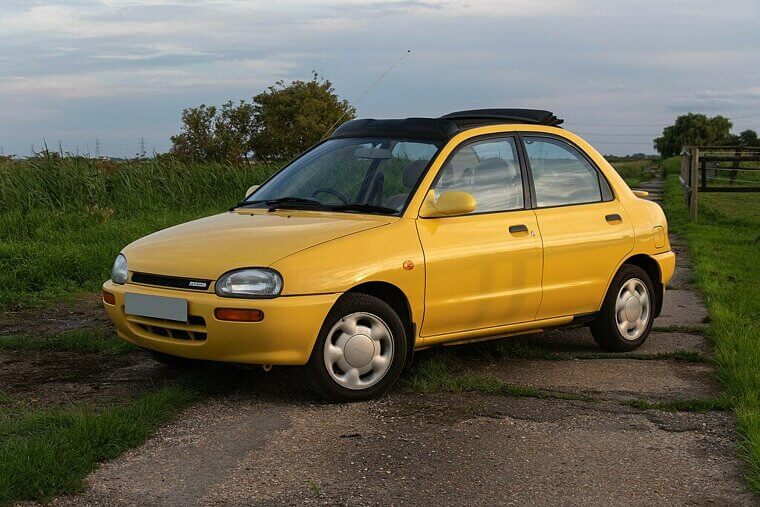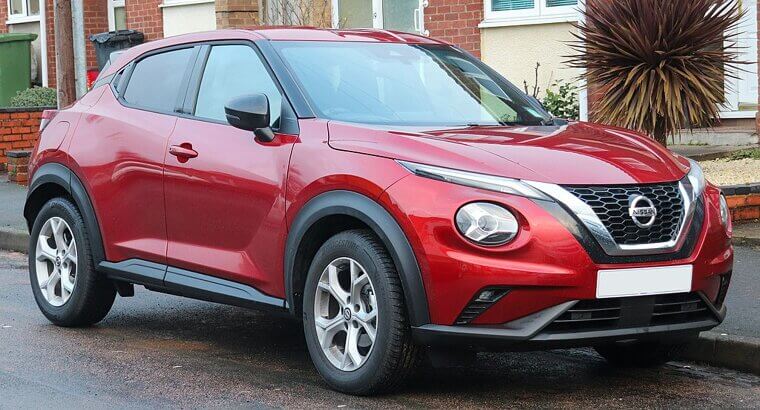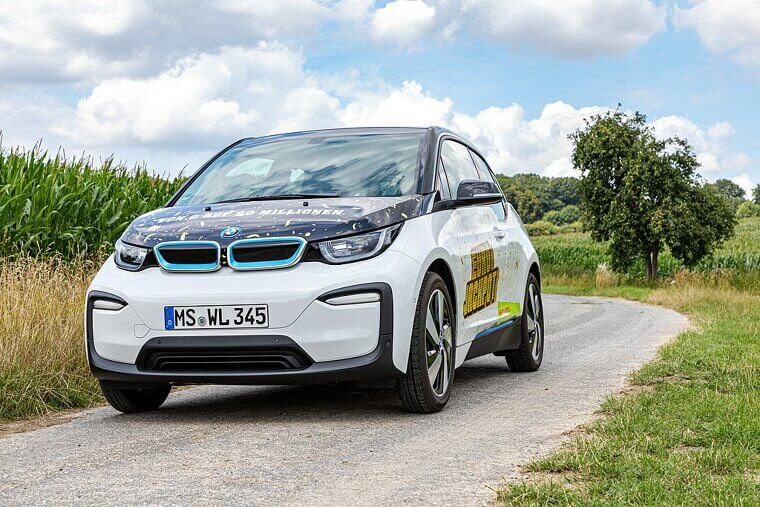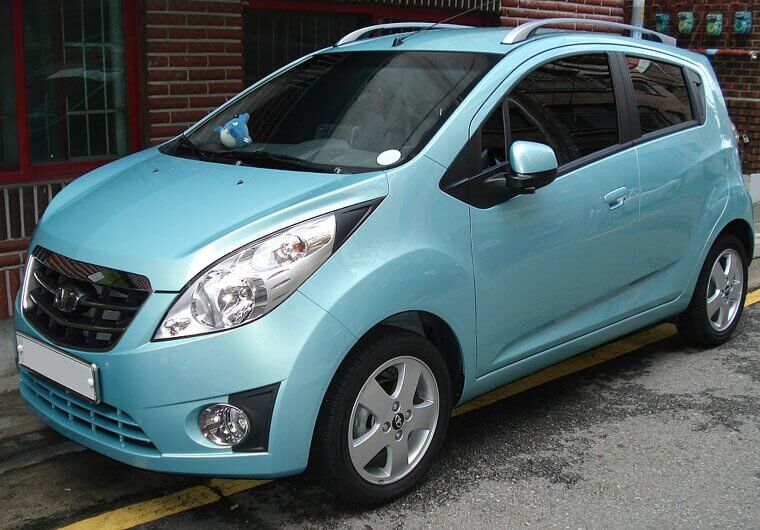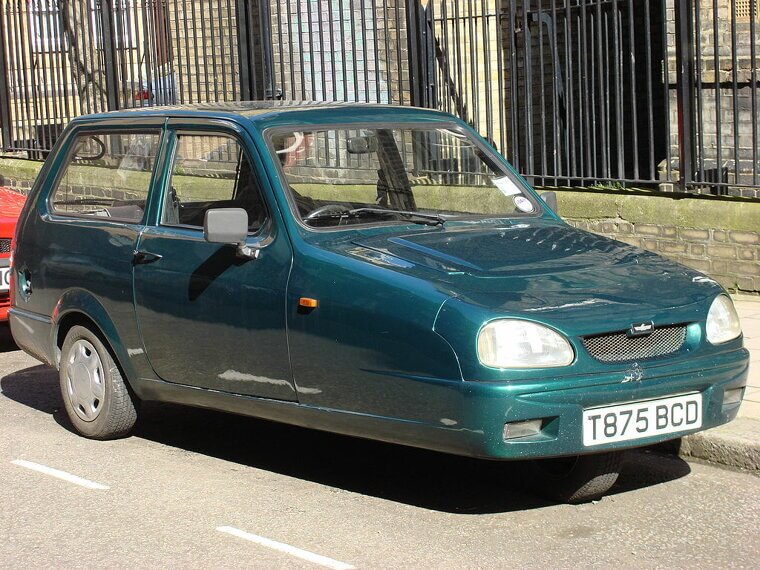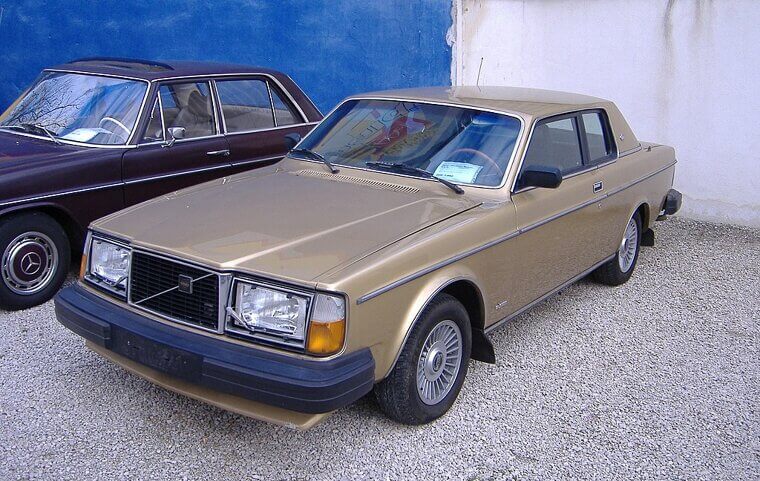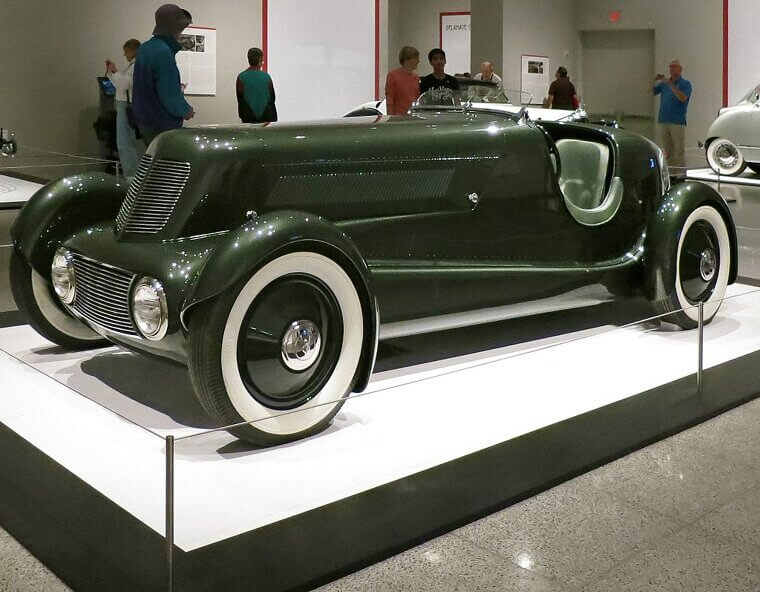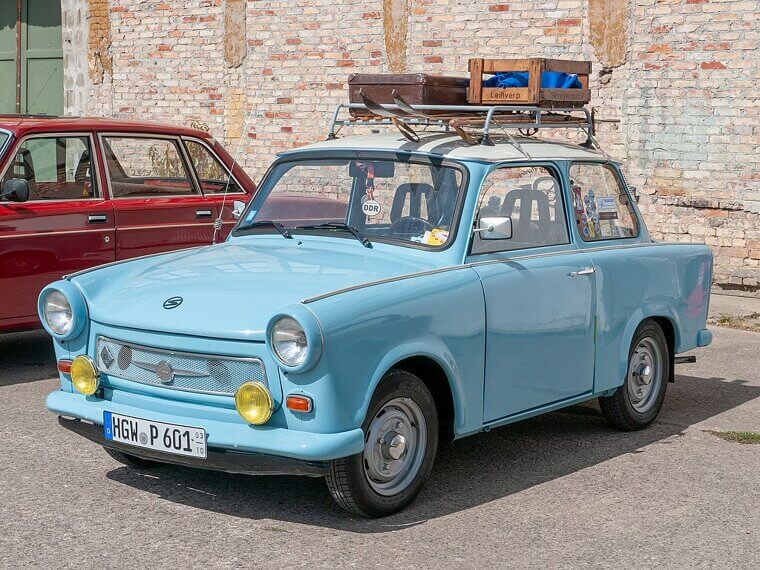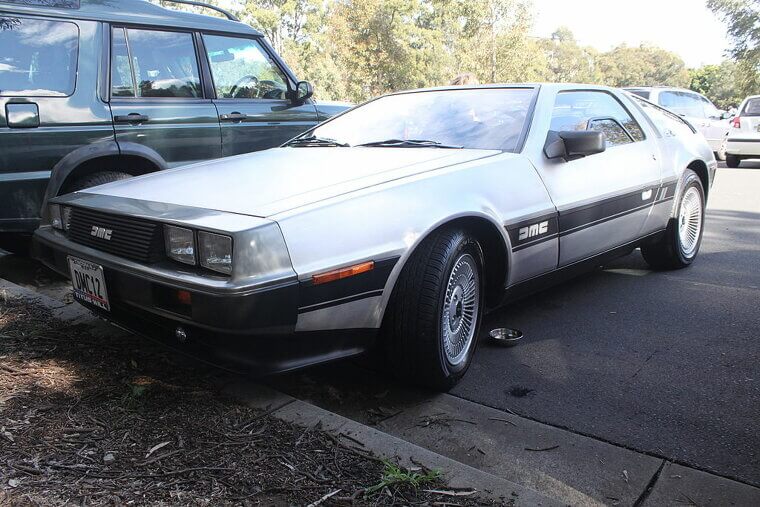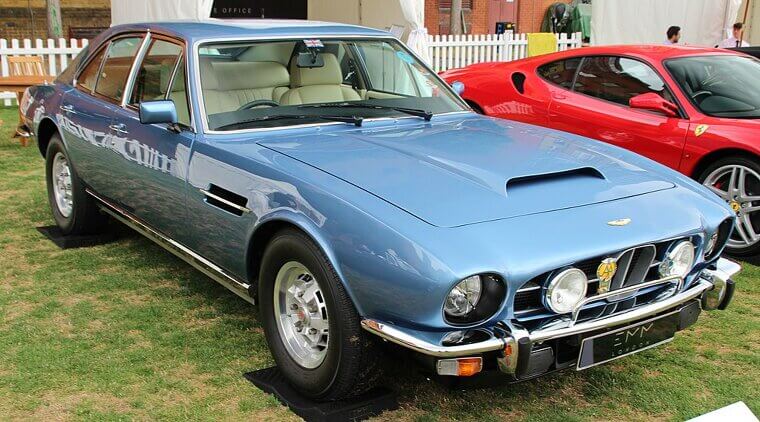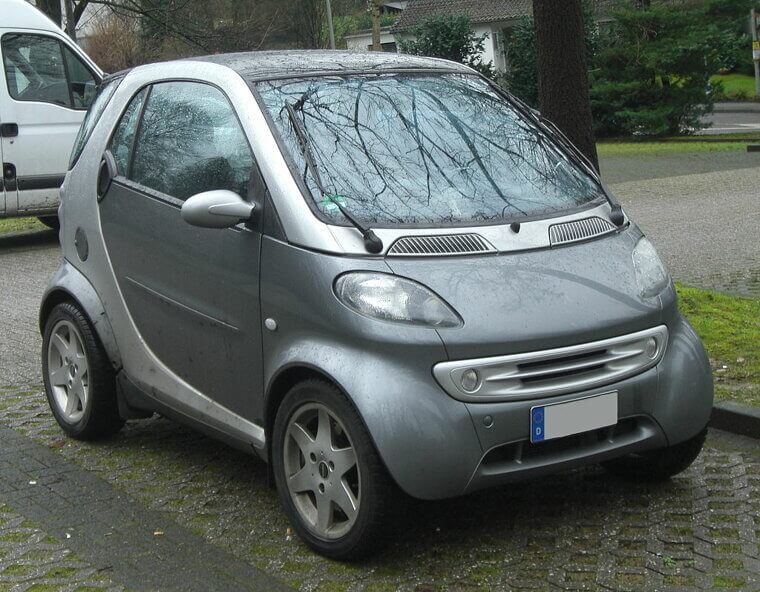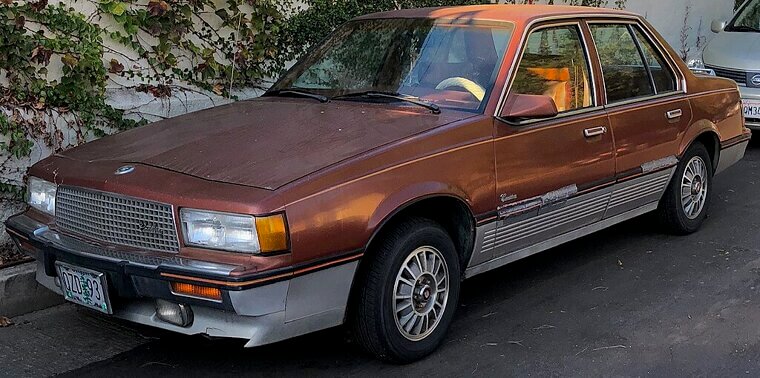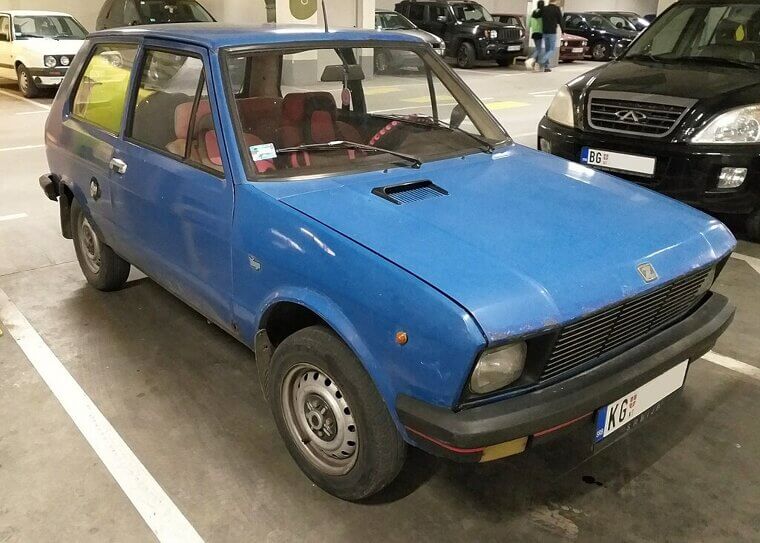Mitsuoka Orochi (2006–2014)
The name Orochi comes from a mythological Japanese serpent, and its weird undulating form certainly left an impression on people - if not always for the right reasons! It was designed to be strange and niche; it hit every mark perfectly.
Pontiac Aztek (2001–2005)
If a design committee each created a piece of a car without communicating or seeing the other pieces, it would probably look like the Aztek. It’s considered one of the ugliest cars ever made, but Breaking Bad gave it some street cred.
Fiat Multipla (1998–2010)
Have you ever seen a car with headlight eyebrows? That’s exactly what Multipla’s secondary set of lights looked like. Its bulging design was so bad that Fiat decided enough was enough and gave it cosmetic surgery in 2004. Weirdly, even before its facelift it sold well in Europe .
Chrysler PT Cruiser (2000–2010)
Chrysler aimed for a retro gangster look with the PT Cruiser, and while they hit the mark with some drivers, others couldn’t see it as anything but a cartoon hearse. It started with strong sales, but it had already worn out its welcome by mid-2000.
Nissan Cube (2009–2014, U. S. )
The Japanese market appreciated the Cube, but its release in the U.S. was less than stellar. In fact, its titular boxy shape looked like something out of Minecraft, and it got a few raised eyebrows with a side of mockery. It has a cult fan base now, though.
Honda Element (2003–2011)
There’s no doubt that the boxy Honda Element is weird, and that’s why some people love it - it goes against the grain. But there’s also a lot of people who find its unashamed slab aesthetic, odd plastic fender flares and rear suicide doors off-putting.
SsangYong Rodius (2004–2013)
Ken Greenley, the former head designer for the Royal College of Art, was going for a vehicle that looked like a land yacht. And, well, art is subjective. It came out more like a minivan drawn by someone who had only heard about them from third-hand accounts.
Toyota Will Vi (2000–2001)
The WiLL Vi was aimed at artsy youths and released only in Japan, but even in the East’s more accepting market its reverse-rake rear glass and square shape was too weird! Toyota abandoned it after a year, and now it's rarer than rocking horse feces.
Renault Avantime (2001–2003)
Although it was a design success story, buyers couldn’t work out what the Avantime was supposed to be. It was a strange crossbreed of coupe and minivan, but didn’t hit the strengths of either; people stopped and stared, scratched their heads, then walked on.
Subaru Baja (2003–2006)
Squash a car and truck together, add a tiny pickup bed on the back and some saturday morning cartoon villain styling and you’ve got the Baja, a unique combination that face-planted in the sales department. Dedicated Subaru fans appreciated it, but everyone else was confused.
Tata Magic Iris (2010–2017)
An egg-shaped microvan that looks like the lovechild of a jellybean and a tuk-tuk, the Magic Iris was designed to replace Indian Rickshaws and it’s surprisingly effective in urban environments. It eschewed cool for practicality, but outside its environment it wasn’t taken seriously.
Isuzu VehiCROSS (1997–2001)
Isuzu weren’t really going for a best-seller with the vehiCROSS so much as flexing their creative muscles; it’s a little buggy-looking offroader with wide-eyed headlights and weird fenders. It is limited though - which automatically makes it a collectible - and it’s surprisingly sturdy for its size.
AMC Pacer (1975–1980)
Often considered a fishbowl on wheels, the Pacer was a glass-covered, bubble-shaped vehicle seemingly the result of optimism and questionable ’70s decisions. It didn’t fit into any category and people roasted it at length, though Wayne’s World helped save it from complete obscurity.
Citroën Ami 6 (1961–1969)
The reverse-rake rear window returned for the Ami 6’s design, and it was slapped onto a strange and awkward-looking little thing akin to a beetle. The French market loved it - it was a bestseller for a while - but outside the country it was too quirky to gain traction.
Daihatsu Midget II (1996–2001)
The Midget II was essentially a cartoon vehicle, with a single cyclopean headlight on some models and a weird motorcycle layout in others. It was a hit in urban Asian areas where its small size was advantageous; everywhere else, it mostly incited laughter and confusion.
Peugeot 1007 (2004–2009)
If you’ve never seen a car look surprised, you should check out the Peugeot 1007. It was small, had power sliding doors on both sides, and has frequently been compared to a toaster, but you can definitely call it unique.
Buick Rendezvous (2001–2007)
The Rendezvous was boxy and awkward, but it was practical, and did alright in sales. However, it quickly fell into obscurity, and now it’s mostly forgotten - unless you see one on a highway, then you can tell how it aged like Dorian Gray’s portrait.
Chevrolet HHR (2005–2011)
The HHR tried to be practical and cool, but it came out like a swollen van! Nevertheless, there were people who appreciated its retro charm. Over time, that charm has lost its shine, and outside DIY van fans, it's become stale and tasteless.
Suzuki X-90 (1995–1997)
It’s hard to say what the X-90 actually is - a coupe, an SUV, or something else entirely? Suzuki had a lot of guts to go so weird, and while that attracted some, others ran away screaming. It’s more of a meme than a car now.
Ford Scorpio Mk2 (1994–1998)
If you see it from the rear, you’d think the Mk2 was elegant, but when it turns around? Hoo, boy! That front end looks like the Wicked Witch of the West on bath night. It’s a good cruiser, but it might turn onlookers to stone.
Lincoln Blackwood (2002)
The Blackwood is a perfect example of how not to combine genres - a luxury pickup that doesn’t appeal to any demographic. The pickup bed was unusable and lined with carpet (yes, real shag carpet) and luxury buyers didn’t want a pickup. It lasted a whole year.
The Nissan S-Cargo (1989–1991)
The punny-named S-Cargo was inspired by snails; even its side mirrors invoke antennae! Nissan forsook utility and practicality for fun. Even though it wasn’t officially released in the U.S., a few slowly found their way over to baffle drivers, and now it’s a punchline.
Mazda 121 “Bubble” (1990–1996)
The Cherry Mazda 121 looked like a child’s drawing of a car come to life, so it’s not without its charm. However, it’s the kind that wears off quickly when you realize you have to drive a Kinder Joy toy from the ’90s.
Nissan Juke (2010–2019, Gen 1)
The Juke hit headlines for its outlandish appearance: it looks like a crossover and coupe’s lovechild hit a cartoon frog villain at high speed. It was hugely successful - especially in Japan and Europe - but now buyers have a reminder of their questionable taste.
BMW I3 (2013–2022)
If vegans made spaceships with wheels, they'd probably look like the BMW i3, which is actually made from reclaimed wood. It was expensive, quirky, and largely ignored in the U.S. for those exact reasons, but it was ahead of its time… if not ahead of taste trends.
Daewoo Matiz (1998–2011)
The Daewoo Matiz was designed as an urban city car, so it’s small and bulbous with round headlights and exaggerated proportions. It looks like something you might find in a child’s cartoon, and while it’s perfectly practical it’s also highly ridiculous.
Reliant Robin (1973–2002)
What made Reliant think that a three-wheeled car - the single wheel being rear-mounted - was a good idea, we’ll never know. And surprise! It tipped over on sharp corners. Who saw that coming? Its unsafe nature has shockingly relegated it to the bargain bin of designs.
Volvo 262C Bertone (1977–1981)
Usually known for their conservative efforts, Volvo aimed to add some luxury with the Bertone… and they shouldn’t have bothered. It stood in stark contrast to Volvo’s utilitarian aesthetic, and rather than being celebrated for its differences, it’s been mostly lost to history.
Ford Edsel (1958–1960)
Hyped as the next stage in vehicular evolution, the Edsel fell so short of that milestone it’s become historical. Sure, it was advanced for its time, but its infamously weird front grille and hideous design were all anyone could talk about.
Trabant 601 (1964–1990)
The Trabant 601 was a dated design when it came out: a strange two-stroke engine in a car made from lightweight duroplast and so crudely built it was nicknamed the “sawdust car.” It only got worse with age, and now it’s legendarily outdated.
DMC DeLorean DMC-12 (1981–1983)
Made famous thanks to its appearance in Back to the Future, the DeLorean looked space age and futuristic, but its performance design has left a larger stain as time went on. It was basically a stainless steel lump with an arthritic slug’s speed and fragile body panels.
Aston Martin Lagonda (1976–1990)
The Lagonda was aiming for space age when it debuted, and it sort of got there… but instead of previous sleek Aston Martin designs, it was more ’70s boxy sci-fi. As tastes changed, its appeal became even worse; sharp angles and dated interiors mark it as a relic of times gone past.
Smart ForTwo (1998–present, Early Gens)
A high roof, weird proportions and just two seats were all part of the Smart ForTwo’s design for an efficient urban vehicle. The original model looks cramped and awkward now, while its proportions make it appear more toy than vehicle!
Cadillac Cimarron (1982–1988)
Everyone was expecting the luxury that Cadillac is usually renowned for, but what they got with the Cimarron was a re-badged Chevy Cavalier with no innovation and a boring design. It went down in history as a huge marketing mistake.
Zastava Yugo (1985–1992, U. S. )
The Yogoslavian-made car was designed to be the cheapest car in the U.S. and it succeeded - just not in a good way. It’s widely considered the worst car ever made, with abysmal reliability and roastable design… and that was when it was released. Now, it’s even worse!

